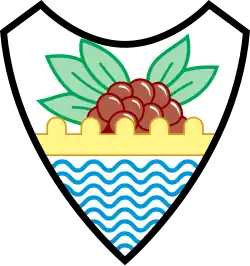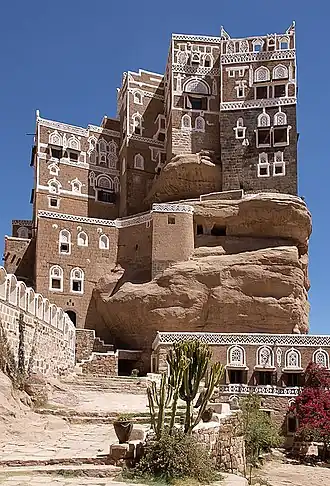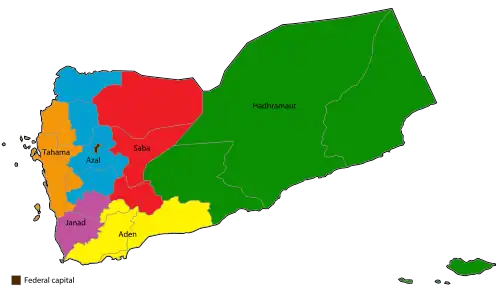Portal:Yemen
Yemen Portal

.svg.png)
Yemen, officially the Republic of Yemen, is a country in West Asia. Including the Socotra Archipelago, mainland Yemen is located in southern Arabia; bordering Saudi Arabia to the north, Oman to the northeast, the south-eastern part of the Arabian Sea to the east, the Gulf of Aden to the south, and the Red Sea to the west, sharing maritime borders with Djibouti, Eritrea, and Somalia across the Horn of Africa. Covering roughly 455,503 square kilometres (175,871 square miles), with a coastline of approximately 2,000 kilometres (1,200 miles), Yemen is the second largest country on the Arabian Peninsula. Sanaa is its constitutional capital and largest city. Yemen's estimated population is 34.7 million, mostly Arab Muslims. It is a member of the Arab League, the United Nations, the Non-Aligned Movement and the Organisation of Islamic Cooperation.
Owing to its geographic location, Yemen has been at the crossroads of many civilisations for over 7,000 years. In 1200 BCE, the Sabaeans formed a thriving commercial kingdom that colonized parts of modern Ethiopia and Eritrea. In 275 CE, it was succeeded by the Himyarite Kingdom, which spanned much of Yemen's present-day territory and was heavily influenced by Judaism. Christianity arrived in the fourth century, followed by the rapid spread of Islam in the seventh century. From its conversion to Islam, Yemen became a center of Islamic learning, and Yemenite troops played a crucial role in early Islamic conquests. Much of Yemen's architecture survived until modern times. For centuries, it was a primary producer of coffee, exported through the port of Mocha. Various dynasties emerged between the 9th and 16th centuries. During the 19th century, the country was divided between the Ottoman and British empires. After World War I, the Kingdom of Yemen was established, which in 1962 became the Yemen Arab Republic (North Yemen) following a coup. In 1967, the British Aden Protectorate became the independent People's Democratic Republic of Yemen (South Yemen), the first and only officially socialist state in the Arab world. In 1990, the two Yemeni states united to form the modern Republic of Yemen, with Ali Abdullah Saleh serving as the first president until his resignation in 2012 in the wake of the Arab Spring.
Since 2011, Yemen has been enduring a political crisis, marked by street protests against poverty, unemployment, corruption, and President Saleh's plan to amend Yemen's constitution and eliminate the presidential term limit. By 2015, the country became engulfed by an ongoing civil war with multiple entities vying for governance, including the Presidential Leadership Council of the internationally recognized government, and the Houthi movement's Supreme Political Council. This conflict, which has escalated to involve various foreign powers, has led to a severe humanitarian crisis.
Yemen is one of the least developed countries in the world, facing significant obstacles to sustainable development, and is one of the poorest countries in the Middle East and North Africa. In 2019, the United Nations reported that Yemen had the highest number of people in need of humanitarian aid, amounting to about 24 million individuals, or nearly 75% of its population. As of 2020, Yemen ranked highest on the Fragile States Index and second-worst on the Global Hunger Index, surpassed only by the Central African Republic. As of 2024, Yemen is regarded as the world's least peaceful country by the Global Peace Index. Additionally, it has the lowest Human Development Index out of all non-African countries. Yemen is one of the world's most vulnerable countries to climate change and among the least prepared to handle its effects. (Full article...)
Selected article -
Sheba, or Saba, was an ancient South Arabian kingdom that existed in Yemen from c. 1000 BCE to c. 275 CE. Its inhabitants were the Sabaeans, who, as a people, were indissociable from the kingdom itself for much of the 1st millennium BCE. Modern historians agree that the heartland of the Sabaean civilization was located in the region around Marib and Sirwah. In some periods, they expanded to much of modern Yemen and even parts of the Horn of Africa, particularly Eritrea and Ethiopia. The kingdom's native language was Sabaic, which was a variety of Old South Arabian.
Among South Arabians and Abyssinians, Sheba's name carried prestige, as it was widely considered to be the birthplace of South Arabian civilization as a whole. The first Sabaean kingdom lasted from the 8th century BCE to the 1st century BCE: this kingdom can be divided into the "mukarrib" period, where it reigned supreme over all of South Arabia; and the "kingly" period, a long period of decline to the neighbouring kingdoms of Ma'in, Hadhramaut, and Qataban, ultimately ending when a newer neighbour, Himyar, annexed them. Sheba was originally confined to the region of Marib (its capital city) and its surroundings. At its height, it encompassed much of the southwestern parts of the Arabian Peninsula before eventually declining to the regions of Marib. However, it re-emerged from the 1st to 3rd centuries CE. During this time, a secondary capital was founded at Sanaa, which is also the capital city of modern Yemen. Around 275 CE, the Sabaean civilization came to a permanent end in the aftermath of another Himyarite annexation. (Full article...)
List of selected articles
|
|---|
Selected biography -
Ahmad bin Yahya Hamidaddin (18 June 1891 – 19 September 1962) was the penultimate king of the Kingdom of Yemen, who reigned from 1948 to 1962. His full name and title was H.M. al-Nasir-li-Dinullah Ahmad bin al-Mutawakkil 'Alallah Yahya, Imam and Commander of the Faithful, and King of the Mutawakkilite Kingdom of the Yemen.
Ahmad's ruthless, arbitrary and inconsistent rule made him the subject of a coup attempt, frequent assassination attempts and eventually led to the downfall of the kingdom shortly after his death. His enemies ranged from ambitious family members to forward-looking pan-Arabists and Republicans and from them he was given the name "Ahmad the devil." He remained surprisingly popular among his subjects, particularly the northern tribesmen from whom he had the name "Big Turban". For his remarkable ability to narrowly escape numerous assassination attempts, he was known as al-Djinn. (Full article...)
General images -
Selected city -
Rada'a is one of the cities of the Republic of Yemen. It is situated in the southeastern region of the capital city of Sana'a, approximately 150 kilometers away from it, at an elevation of approximately 2100 meters above sea level. Geographically, Rada'a belongs to the Al-Bayda governorate. It is situated within the administrative boundaries of the Rada'a district. The 2004 census recorded the population of the area as 57,215.
It is one of the ancient Yemeni cities referenced in the Victory Inscription (RES.3945), an inscription written by the Sabean king "Karb-el-Watr," also known as the Makrab of Sheba, in the seventh century BCE. It is postulated that the Himyarite monarch, "Shamar Yahrash," resided in Rada'a, which may be indicative of the ancient origins of this settlement. Additionally, some writers have described it as a town with a favorable climate and an abundance of land, grapes, and fruits. It is situated in close proximity to several districts, including Anas to the north, Murad to the east, Al-Bayda and Yafi to the south, and Yarim and Ammar to the west. The lands of Rada'a are watered from the Ghayl al-Dawla and Ghayl al-Majri, and their water flows to two sides. The western valleys, fed by the water from the aforementioned sources, flow into Wadi Bina and Yarim and then run to Abyan, eventually pouring into the sea. In a parallel course, the water from Rada'a, Thah, Al-Arash, Al-Sawadiyah and Radman, also fed by the Ghayl al-Dawla and Ghayl al-Majri, flows into Wadi Adnah and ultimately into Marib. (Full article...)
List of selected cities
|
|---|
Selected picture -
Selected cuisines, dishes and foods -
Zhug (from Judeo-Yemenite Arabic سحوق or זחוק IPA: [zħuːq] through Hebrew: סְחוּג, romanized: skhug), also known as sahawiq (Yemeni Arabic: سَحاوِق, IPA: [saħaːwiq]), is a hot sauce originating in Yemeni cuisine. In other countries of the Arabian Peninsula it is also called mabooj (Arabic: معبوج), and bisbaas. (Full article...)
Related portals
Religions in Yemen
Arab states
Related portals
Categories

Topics
Related portals
Religions in Yemen
Arab states
Related portals
Associated Wikimedia
The following Wikimedia Foundation sister projects provide more on this subject:
-
Commons
Free media repository -
Wikibooks
Free textbooks and manuals -
Wikidata
Free knowledge base -
Wikinews
Free-content news -
Wikiquote
Collection of quotations -
Wikisource
Free-content library -
Wikiversity
Free learning tools -
Wiktionary
Dictionary and thesaurus
More portals
-
 List of all portals
List of all portals -

-

-

-

-

-

-

-

-

-
 Random portal
Random portal -
 WikiProject Portals
WikiProject Portals
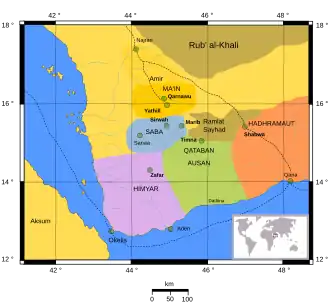

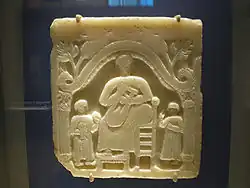

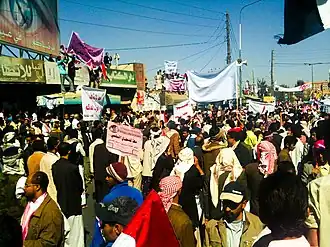



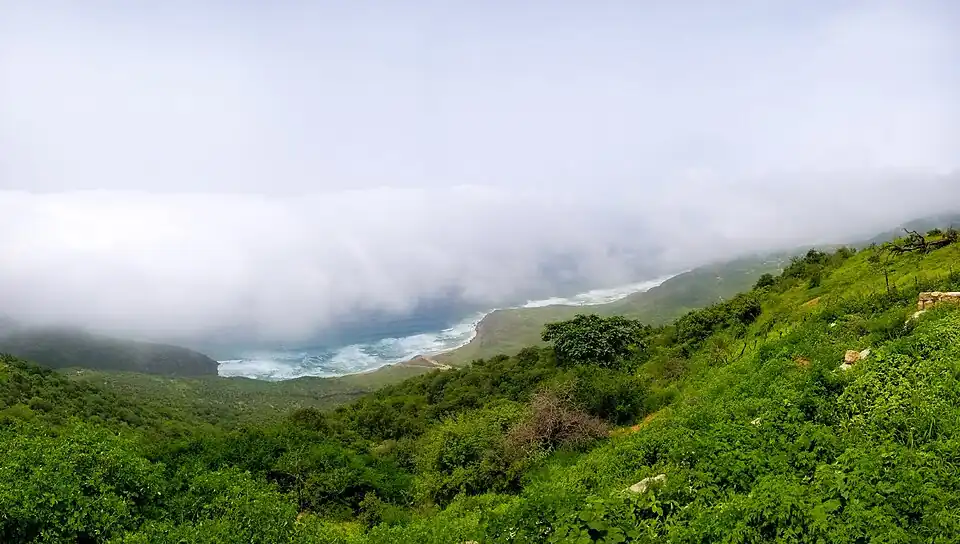

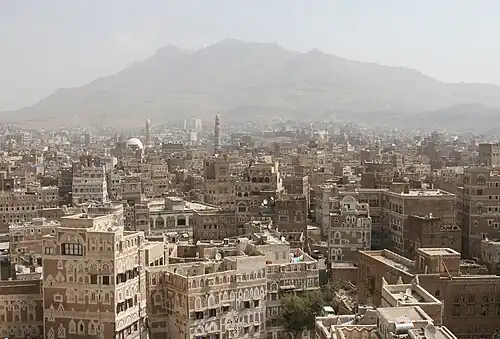

.jpg)
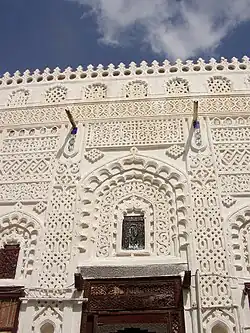
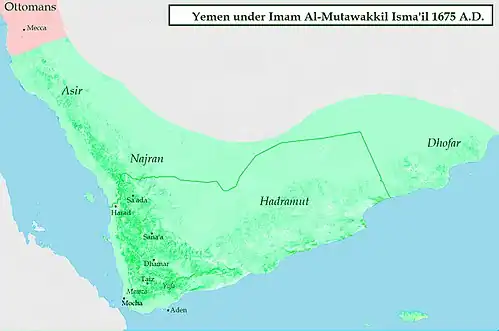

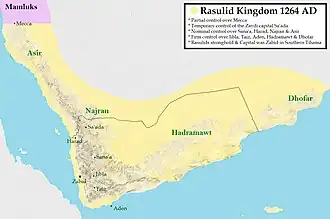


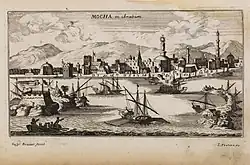

.png)

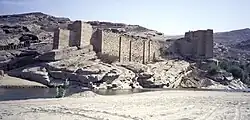
.svg.png)
.jpg)
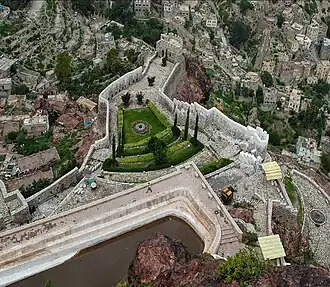

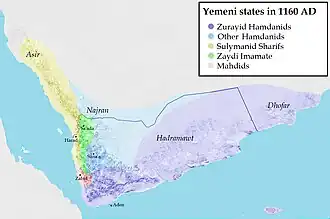
.jpg)

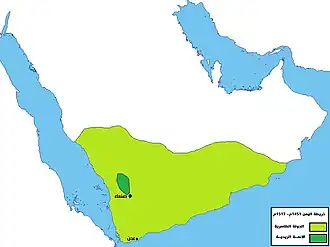
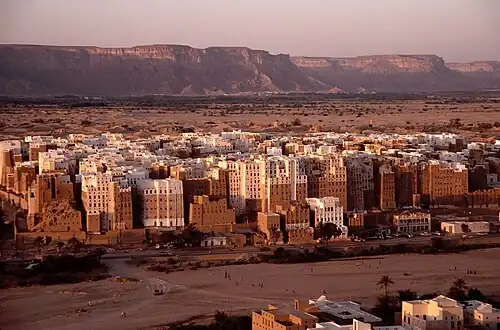
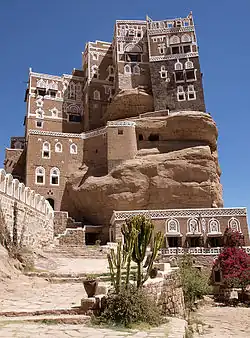
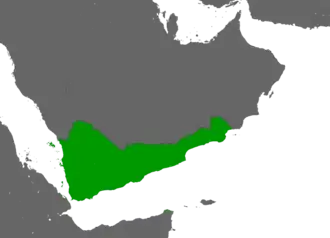


.jpg)




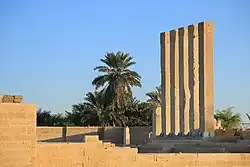
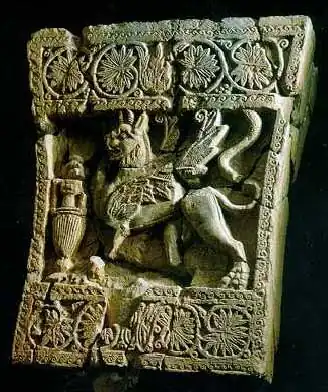
%252C_1902.jpg)
.jpg)

